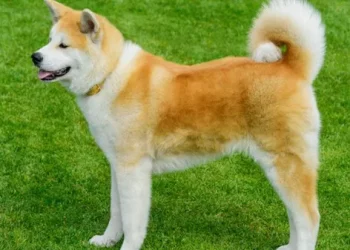Akita puppies are adorable, fluffy balls of energy that can quickly become a beloved member of your family. However, as they grow and mature, their size and protective instincts can become a challenge if they are not properly trained. Training your Akita puppy is crucial to ensure they become a well-behaved and obedient companion. In this article, we will discuss some tips and techniques to help you train your Akita puppy effectively.
- Start Early
The earlier you start training your Akita puppy, the better. Puppies are like sponges, and they are more receptive to learning during their early weeks and months. Introduce basic commands, such as “sit,” “stay,” and “come,” as soon as your Akita puppy arrives home. Consistency is key, so make sure everyone in the household is using the same commands and techniques.
- Positive Reinforcement
Akita puppies respond best to positive reinforcement training techniques. Reward your puppy with treats, toys, and praise when they successfully complete a command. Positive reinforcement encourages your puppy to repeat the desired behavior and helps build a strong bond between you and your puppy.
- Socialization
Socialization is crucial for all puppies, but especially for Akitas. Akitas have a natural protective instinct that can make them wary of strangers and other animals. Expose your puppy to a variety of people, dogs, and environments during their critical socialization period. This will help your puppy develop confidence and a friendly disposition towards other animals and people.
- Consistency
Consistency is essential when training your Akita puppy. Use the same commands and techniques every time you train your puppy. Avoid confusing your puppy by using different commands or techniques. Be patient and stay consistent in your training efforts, and your puppy will eventually learn.
- Exercise
Akitas are high-energy dogs that require plenty of exercise. Daily exercise not only helps your puppy stay healthy and fit, but it also helps release pent-up energy and prevent destructive behavior. Regular exercise can also help reduce anxiety and stress, which can improve your puppy’s behavior.
- Crate Training
Crate training is an effective way to housebreak your Akita puppy and provide them with a safe and comfortable space to rest. Akitas are naturally clean animals, and they will not want to soil their crate. Introduce your puppy to the crate gradually and use positive reinforcement to encourage them to use it.
- Professional Training
Professional training is an option if you feel that you are not making progress with your Akita puppy’s training. A professional trainer can provide personalized training sessions that address your puppy’s specific needs. They can also help with behavior problems and ensure that your puppy is well-socialized.
In conclusion, training your Akita puppy requires patience, consistency, and positive reinforcement. Start training your puppy early, use consistent commands and techniques, and socialize your puppy to help them become well-behaved and obedient. Regular exercise and crate training can also help with behavior problems. If you are struggling with your puppy’s training, consider seeking professional help. With patience and effort, your Akita puppy will become a well-behaved and loving companion.


























